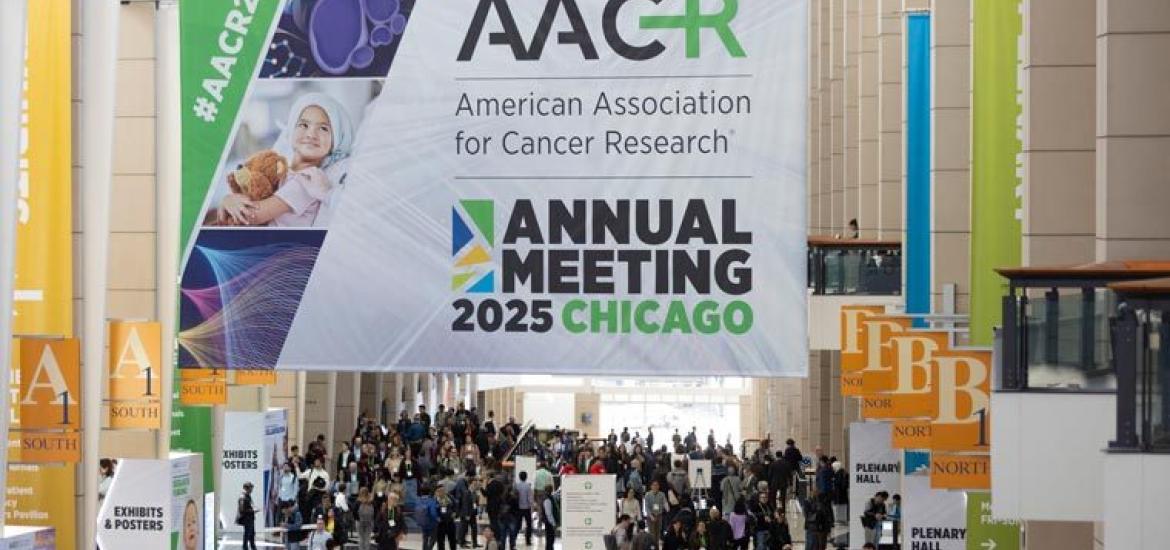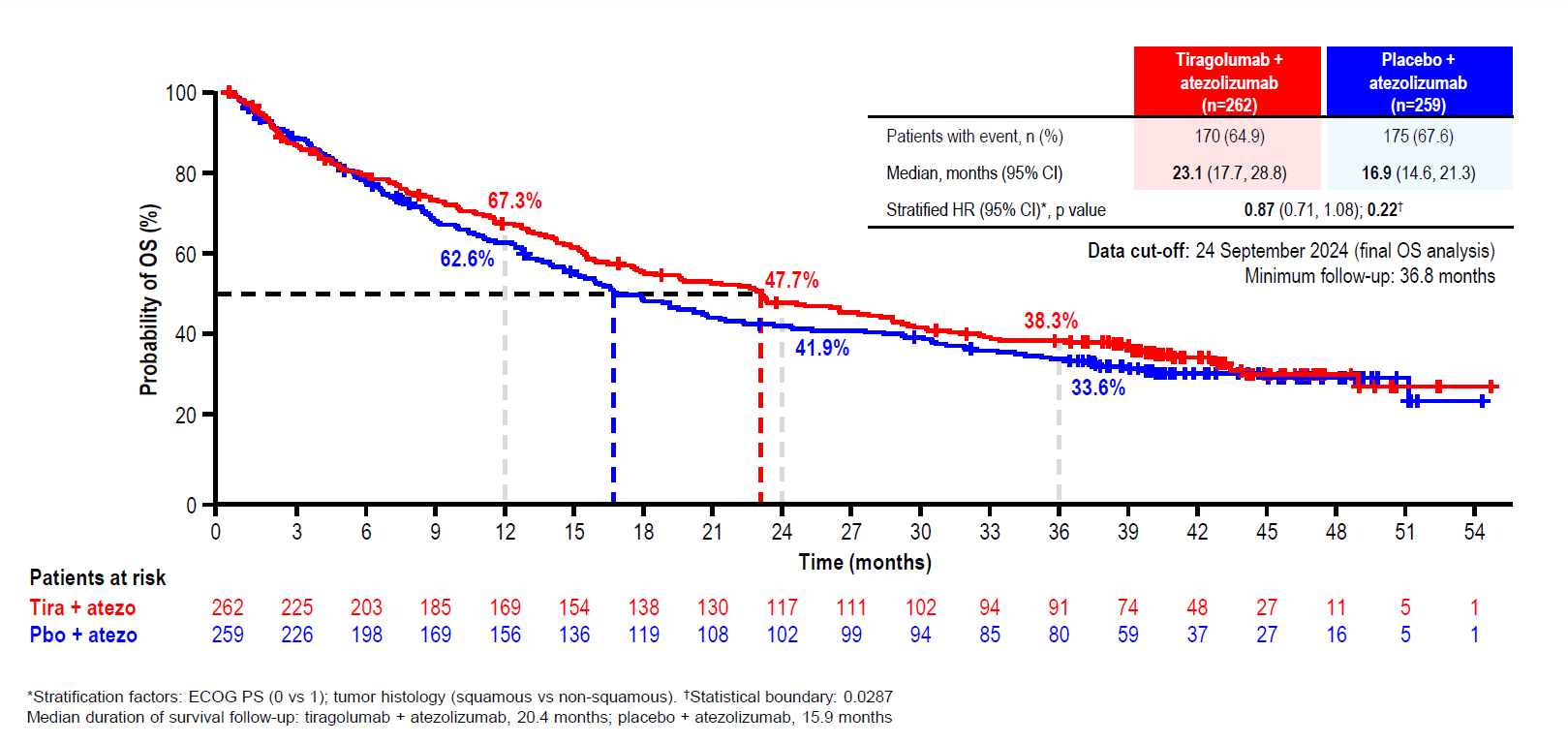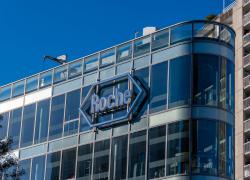
AACR 2025 – a requiem for Roche's TIGIT
Survival in Skyscraper-01 deteriorated, and bore no relation to the Cityscape result.
Survival in Skyscraper-01 deteriorated, and bore no relation to the Cityscape result.

Since Roche has already admitted defeat in tiragolumab's phase 3 Skyscraper-01 trial in first-line lung cancer, and written off most other uses of this anti-TIGIT MAb, the study might have little beyond academic interest. But full data revealed at the AACR conference offer a stark reminder about the risk of chasing a post-hoc phase 2 signal, and show how futile early signs had been.
Crucial to the hope had been an unexpected data leak in August 2023 that suggested improving overall survival – a signal now revealed as illusory. Presenting Skyscraper-01 at AACR, the best that Dr Solange Peters could say was that numerical PFS and OS improvements suggest some promise, but that "further data are needed to identify the patient population who could benefit".
As well as reporting final OS data from Skyscraper-01, which combined tiragolumab with Tecentriq in first-line PD-L1 ≥50% expressing NSCLC, Peters revealed that this trial used the same statistical powering allocation as Skyscraper-02. The latter was carried out in first-line SCLC, and failed for PFS and OS in May 2022.
Statistical powering became a live issue with disclosure at ASCO 2022 that only 0.001 alpha had been allocated to PFS in Skyscraper-02, leaving a relatively generous p value of 0.049 to be cleared for OS. If the same was true for Skyscraper-01, the thinking went, that study still had a decent chance of hitting on OS after first failing to clear the very demanding PFS bar.
Of course none of this came to pass, with Roche disclosing the absolute failure of Skyscraper-01 last November. In the event OS has yielded a non-significant 13% reduction in risk of death and 6.2-month median increase versus Tecentriq alone, and a most unimpressive p value of 0.22, Peters, from Centre Hospitalier Universitaire Vaudois, told AACR.
Final OS analysis in Skyscraper-01

PFS was only slightly more impressive, yielding a 22% reduction in risk of progression or death and p=0.02, showing the extent to which the 0.001 alpha failed to be cleared.
It might come as a surprise that Skyscraper-01 failed to hit its OS endpoint by such wide margin. Roche's notorious 2023 data leak indicated that the study's OS hazard ratio was 0.82 at first interim analysis and 0.81 at the second, so the fact final OS analysis showed a deterioration of this metric to 0.87 is curious indeed.
Another mystery, which continues to be debated as companies decide whether to push into pivotal studies, is why results from tiragolumab's phase 2 Cityscape trial appeared so much better than those ultimately reported in Skyscraper-01. It was Cityscape, in particular post-hoc data from its PD-L1 ≥50% subgroup, that served as the basis for Roche embarking on Skyscraper-01.
Discussing the AACR presentation, Dr Ramaswamy Govindan, from Washington University School of Medicine, said Skyscraper-01 included more patients with liver and brain metastases, and a greater proportion with non-squamous NSCLC, than Cityscape. This "possibly" accounted for the difference, he suggested.
More importantly, however, Skyscraper-01's active arm enrolled 262 patients, versus just 29 in the post-hoc Cityscape subgroup. Either way, Cityscape remains one of the most misleading phase 2 signals of recent times.
1st-line PD-L1≥50% NSCLC: how phase 3 failed to replicate phase 2
Tiragolumab + Tecentriq | Tecentriq | |
|---|---|---|
| PFS in Cityscape (post hoc subgroup) | 16.6mth | 4.1mth |
| HR=0.29 | ||
| PFS in Skyscraper-01 | 7.0mth | 5.6mth |
| HR=0.78 | ||
| OS in Cityscape (post hoc subgroup) | NE | 12.8mth |
| HR=0.23 | ||
| OS in Skyscraper-01 | 23.1mth | 16.9mth |
| HR=0.87 | ||
Source: OncologyPipeline.
6029













